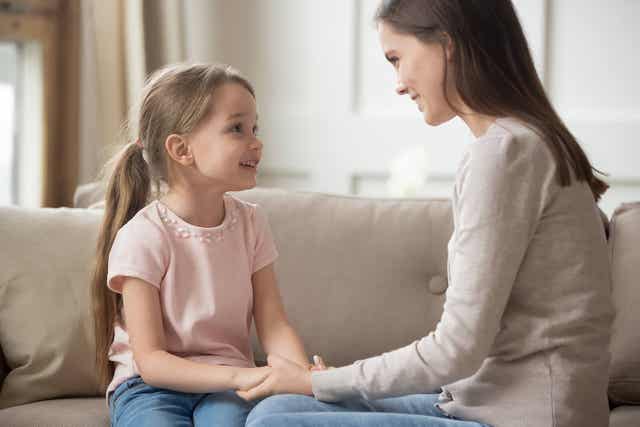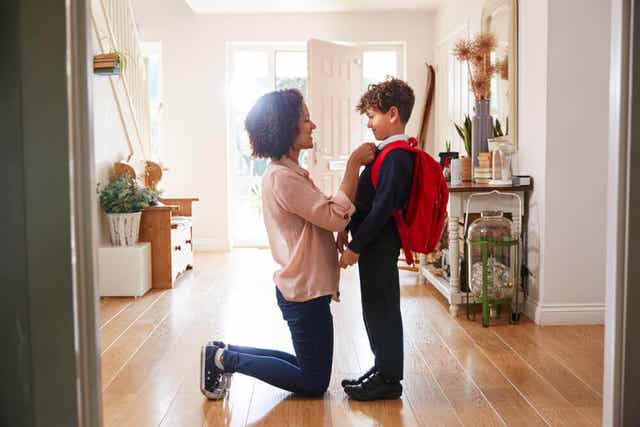Why Use Positive Discipline at Home?

Nowadays, parents don’t just think positive discipline is important at home. In addition, they think choosing an academic environment that helps them grow into well-rounded people is important. Therefore, they look for schools that help families, teachers, and students to work together.
Generally, we think of integral development as not just physical and verbal, but also emotional and social. So, it’s a good basis for multiple aspects in life to help kids with their general well-being.
Positive discipline at home pairs well with a school that encourages involvement inside and outside of school. Together, they can help children participate actively and want to take on new responsibilities.
Let’s talk more about this topic below.
Positive discipline, the first step towards integral development

Positive parenting or positive discipline consists of teaching children respect, but while staying firm. In this sense, the goal of this technique is to teach them gently so that they learn good self-discipline. This way, they can cope better with their environment, as it promotes a positive attitude and healthy relationships.
Using the common expression, “Because I said so, period!” It may seem to work at the moment, but it can cause problems in the long term.
This is because not explaining leaves the child without understanding part of the situation. For example, they might not understand why their parents asked them to behave a certain way at a certain time, why they should be responsible and respectful, why there are limits, etc.
The imposition, lack of explanations, yelling and punishments create emotional distance, confrontation and a lack of understanding in general. This is something that can hinder kids’ development both at home and in other settings.
To better understand this, let’s look at an example: when you ask to hold hands to cross the street and they don’t listen, saying, “Because I said so, period!” Won’t make them understand why it’s important to hold hands in that situation and how it keeps them safe.
Moreover, when you tell your child to hold your hand for safety, they’ll be more willing to do it. Also, they’re more likely to think about that the next time.
Choose a good school

Based on what we’ve discussed so far, it’s clear that for children to develop appropriately, parents and schools need to work together.
By involving the children, it’ll not only be easier to reach common ground, but it’ll also be easier to help children grow. In addition, it’ll help make a more pleasant environment for them.
In this sense, it’s worth remembering that when a child feels comfortable both at home and at school, they perform well in class and have healthy relationships with their environment.
San José del Parque, an education for life
The San José del Parque school, located in the Arturo Soria area of Madrid, has an educational style that adapts to the needs of parents. This way, they combine positive discipline with a healthy academic environment to help children develop properly.
This is because it promotes a comprehensive vision of education and encourages kids to be involved in school activities. Then, they get to participate actively and assume responsibilities, as well as make them protagonists of their own learning process.
“In our school, it’s essential that the families and teachers are part of education and work together, accompanying the students in their academic and personal development.”
In addition to fostering a spirit of collaboration between parents, teachers, and students, this school promotes bilingual learning. They believe it’s a key component in child development.
Kindergarten and primary education teachers have extensive experience. In addition to working on literacy, logic, math, scientific thinking, imagination, and creativity, they also work on emotional intelligence in the classroom, which greatly benefits their development.
Collaboration is the key to positive discipline

As you can see, collaboration is a key piece for child development. For this reason, it shouldn’t just happen at home every day, but also in other essential spaces, such as school.
Choosing a good school is something that every parent can worry about, but once you know the keys (discipline, collaboration, comprehensive development, support, communication) it’s possible to assess your options more carefully. Then, you can move on feeling more confident.
Nowadays, parents don’t just think positive discipline is important at home. In addition, they think choosing an academic environment that helps them grow into well-rounded people is important. Therefore, they look for schools that help families, teachers, and students to work together.
Generally, we think of integral development as not just physical and verbal, but also emotional and social. So, it’s a good basis for multiple aspects in life to help kids with their general well-being.
Positive discipline at home pairs well with a school that encourages involvement inside and outside of school. Together, they can help children participate actively and want to take on new responsibilities.
Let’s talk more about this topic below.
Positive discipline, the first step towards integral development

Positive parenting or positive discipline consists of teaching children respect, but while staying firm. In this sense, the goal of this technique is to teach them gently so that they learn good self-discipline. This way, they can cope better with their environment, as it promotes a positive attitude and healthy relationships.
Using the common expression, “Because I said so, period!” It may seem to work at the moment, but it can cause problems in the long term.
This is because not explaining leaves the child without understanding part of the situation. For example, they might not understand why their parents asked them to behave a certain way at a certain time, why they should be responsible and respectful, why there are limits, etc.
The imposition, lack of explanations, yelling and punishments create emotional distance, confrontation and a lack of understanding in general. This is something that can hinder kids’ development both at home and in other settings.
To better understand this, let’s look at an example: when you ask to hold hands to cross the street and they don’t listen, saying, “Because I said so, period!” Won’t make them understand why it’s important to hold hands in that situation and how it keeps them safe.
Moreover, when you tell your child to hold your hand for safety, they’ll be more willing to do it. Also, they’re more likely to think about that the next time.
Choose a good school

Based on what we’ve discussed so far, it’s clear that for children to develop appropriately, parents and schools need to work together.
By involving the children, it’ll not only be easier to reach common ground, but it’ll also be easier to help children grow. In addition, it’ll help make a more pleasant environment for them.
In this sense, it’s worth remembering that when a child feels comfortable both at home and at school, they perform well in class and have healthy relationships with their environment.
San José del Parque, an education for life
The San José del Parque school, located in the Arturo Soria area of Madrid, has an educational style that adapts to the needs of parents. This way, they combine positive discipline with a healthy academic environment to help children develop properly.
This is because it promotes a comprehensive vision of education and encourages kids to be involved in school activities. Then, they get to participate actively and assume responsibilities, as well as make them protagonists of their own learning process.
“In our school, it’s essential that the families and teachers are part of education and work together, accompanying the students in their academic and personal development.”
In addition to fostering a spirit of collaboration between parents, teachers, and students, this school promotes bilingual learning. They believe it’s a key component in child development.
Kindergarten and primary education teachers have extensive experience. In addition to working on literacy, logic, math, scientific thinking, imagination, and creativity, they also work on emotional intelligence in the classroom, which greatly benefits their development.
Collaboration is the key to positive discipline

As you can see, collaboration is a key piece for child development. For this reason, it shouldn’t just happen at home every day, but also in other essential spaces, such as school.
Choosing a good school is something that every parent can worry about, but once you know the keys (discipline, collaboration, comprehensive development, support, communication) it’s possible to assess your options more carefully. Then, you can move on feeling more confident.
This text is provided for informational purposes only and does not replace consultation with a professional. If in doubt, consult your specialist.








